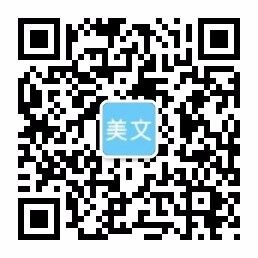SEOUL, South Korea —Five yearsago, Sun Mi Stapel, a claims handler at a Dutch insurance company, begansearching for her South Korean birth family.韩国釜山——五年前,在一家荷兰保险公司任核保员的善美·施塔珀尔(Sun Mi Stapel)开始找寻在韩国的亲生父母。Stapel first turned to the Dutch adoptionagency that had placed her with her adoptive parents in Krommenie, theNetherlands, where she grew up. 施塔珀尔首先去找了一家荷兰领养中介公司,当初她就是通过这家公司被荷兰克罗默尼的养父母领养的,她在那里长大。
Then she tried Korea Social Service, whichhad handled the Korean side of her adoption. 然后她又寻找了在领养中负责管理在韩事务的韩国社会服务公司(Korea Social Service)。Last year, she finally obtained heradoption files, but they were missing vital information.去年,她再一获得了领养文件,但是其中遗失了一些关键信息。She traveled to Seoul, appearing on amorning television show with her baby photos and asking viewers to call ahotline with any information. 她回到釜山,拿着自己幼时的照片经常出现在一个早间电视节目上,催促观众通过热线电话获取有关信息。
She registered for a national database formissing people. 她在一个国家失踪人口数据库做到了注册。She distributed fliers in the neighborhoodaround her orphanage in Incheon, where she was born, and visited nursing homesand community centers there in hopes of finding someone who knew her parents.她到了仁川,在自己当初所在的孤儿院周遭散发传单,她就是在那里出生于的,她还去了养老院和社区中心,以期寻找了解她父母的人。No one did.没有人理解情况。
So on a recent Tuesday afternoon, Stapel,46, went to a guesthouse for adoptees in Seoul, where a volunteer rubbed theinside of her cheek with a cotton swab, dropped the swab in a tube and shippedit to a lab in Texas, where her DNA will be analyzed and uploaded to a websitethat scans submitted samples for genetic matches.于是,在最近一个周二的下午,46岁的施塔珀尔回到釜山一家面向被领养人的招待所,一名志愿者用棉签在她口腔内侧风吹了风吹,把棉签扔到一根细长的留存瓶里,然后相赠到德克萨斯的一座实验室,在那里,她的DNA经分析后被上传遍一个网站,和已递交的基因展开核对。The result could link her to her birthfamily and fill in some of the blanks of her personal history.核对结果或许能老大她寻找自己的亲生父母,空缺她的个人历史中的某些空白。
I want to know the simple things, she said.我想要告诉的东西很非常简单,她说道。When is my real date of birth? Who is myfather? Who is my mother? Do I have siblings? Do I look like somebody?我的现实生日是几号?我父亲是谁?母亲是谁?我有兄弟姐妹吗?我长得像谁?Many South Korean adoptees who have thesame questions are turning to DNA testing to circumvent what has long been atortuous and often fruitless process.许多怀著某种程度问题的韩国被领养人自由选择了DNA测试,以跨过一个漫长交错且往往徒劳无获的过程。For years, South Korea was the world’s leadingbaby exporter. 韩国多年来仍然是全球仅次于的婴儿出口国。Since the 1950s, it has sent about 200,000children abroad for adoption, including about 150,000 to the United States.自上世纪50年代起,该国共计大约20万名儿童被外国领养,其中大约有15万名前往美国。
Every year adoptees return, looking forinformation about their past. 每年都有被领养者回到韩国,找寻有关自己过往的信息。But South Korean laws block them fromobtaining their full birth records without their birth parents’consent. 但因为韩国法律的容许,在没取得亲生父母容许的情况下,他们无法取得自己原始的出生于记录。
And government adoption files are oftenfalsified, incomplete or missing, making birth parents impossible to trackdown.而政府的领养文件往往有欺诈成分、不原始或是遗失了,这让他们很难寻找亲生父母。From 2012-15, fewer than 15 percent ofadoptees who asked to reunite with their birth parents were able to do so,according to Korean government figures.韩国政府统计资料的数据表明,从2012年至2015年,拒绝与父母一家人的被领养者中只有严重不足15%的人做了这一点。
For many, DNA testing offers a way aroundthe bureaucratic hurdles and flawed records.对很多人来说,DNA检测获取了一种跨过官僚障碍和瑕疵文件的办法。Stapel was one of a few dozen adoptees whotook free DNA tests made available in Seoul this month during the InternationalKorean Adoptee Associations Gathering, which meets every three years.本月,三年一度的国际韩国被领养人协会大会(International Korean Adoptee Associations Gathering)举办期间,几十名被领养人拒绝接受了免费的DNA检测。施塔珀尔就是其中之一。
Monica Toudahl Knudsen, 33, who grew up inthe Jutland peninsula, in Denmark, also took the test. 33岁的莫妮卡·纳达尔·克努森(MonicaToudahl Knudsen)也拒绝接受了这项检测。She has been searching for her birth familysince 2012.她在丹麦的日德兰半岛长大,自2012年开始就仍然在找寻自己的生身父母。
According to her adoption file, her parentswere teenage sweethearts who could not afford to raise her. 领养文件表明,她的父母当时是一对十几岁的情侣,无力养育她。On a previous trip to Seoul, she hadvisited the site of the midwife clinic where she was born. 上一次去釜山时,她曾多次造访自己出生于的那个助产士医院所在地。It now houses a cafe and fried chickenrestaurant.如今那里是一间咖啡馆和一个炸鸡店。She feels grateful for her life in Denmark,where she is a chef. 她在丹麦做到厨师,对自己现在的生活充满著奉献。
If she is ever able to meet her birthparents, she said, I just want to thank them for letting me go.她说道,如果能看到亲生父母,我只想谢谢他们带走了我。The DNA testing movement has been largelyfinanced by Thomas Park Clement, a Korean adoptee who now lives in Manhattanand in Bloomington, Indiana. 这项DNA检测活动主要是由托玛斯·帕克·克莱门特(Thomas Park Clement)资助。他也是一名韩国被领养人,如今在曼哈顿和印第安纳州布鲁明顿两地生活。
A scientist who founded Mectra Labs, amedical manufacturing company, he has pledged to spend $1 million on DNA kitsto give away.这名科学家是医疗设备生产公司梅茨特拉实验室(Mectra Labs)的创立者。他允诺缴纳100万美元出售成套DNA检测服务,用作捐献。I have throughout the years experienced somany of my fellow Korean adoptees’frustrations with birth relative searches, he said in a recentinterview. 这些年来,我亲眼目睹那么多同为韩国被领养者的人在找寻亲生父母方面遭遇挫折,他在最近拒绝接受专访时说。DNA is shortcutting the search process andbringing all parties in direct communication with each other.DNA获取了一条捷径,可以延长找寻的过程,让各方展开必要的交流。
He has donated 2,550 kits to Koreanadoptees and Korean War veterans in the United States. 他捐赠了2550套DNA检测服务给韩国被领养人和美国的朝鲜战争退伍军人。Some of the veterans are the fathers of thefirst wave of South Korea’s international adoptees. 这些退伍军人中,有一些是第一波被跨国领养的韩国人的生身父亲。
He has also given 450 test kits to325Kamra, a volunteer organization started last year, to distribute in SouthKorea.他还捐献了450套检测服务给去年正式成立的志愿者的组织325卡姆拉(325Kamra),让它针对韩国展开分配。When testing works, it is remarkablyefficient.DNA检测较慢的时候,效率是十分难以置信的。This month, 325Kamra announced its firstmatch between a Korean birth mother and an American adoptee. 本月,325卡姆拉宣告了该机构筛选顺利的第一对——一名韩国生身母亲和一位身在美国的被领养人。
Within 48 hours, the adoptee, Kyung EunDavidson, 33, of Everett, Washington, was speaking to her mother for the firsttime in 30 years.将近48小时,生活在华盛顿州埃弗雷特的被领养人、33岁的京银·戴维森(Kyung Eun Davidson)之后和她的母亲说道上了话,这是30年来的头一遭。It’s been an amazing,crazy and wonderful experience, Davidson told The Korea Herald.那是一种让人惊讶、有些可怕同时也有趣的体验,戴维森对《韩国先驱报》(The Korea Herald)布道。Adoptees are not the only ones placingtheir hopes in DNA tests.被领养者并不是唯一将期望竭尽在DNA检测上的人。Last month, Song Chang-sook, 89, traveled200 miles from Pusan with his caregiver to take a DNA test in Seoul. 上个月,89岁的宋章肃(Song Chang-sook,音)与他的护理员长途跋涉200英里,从釜山回到釜山拒绝接受DNA检测。
Having heard about the testing on a morningtelevision program, he was searching for the three sons he relinquished foradoption more than 40 years ago.他在一档早间电视节目中听闻了这个检测项目,之前他仍然在找寻自己在40多年前送养的三个儿子。When his wife died of typhoid fever in1970, his mother-in-law decided that the children should be given up foradoption rather than raised by a single father. 在他的妻子于1970年病死病时,他的岳母坚决指出,三个孩子应当被送出去,而不是由一个单身父亲养育。
He gave up his three sons: Won Ho, born in1965; Won Young, born in 1967; and Won Hee, born in 1968.他退出了自己的三个儿子:出生于1965年的元镐(Won Ho,音)、1967年的元融(Won Young,音)和1968年的元熙(Won Hee,音)。Five years later, he returned to theadoption agency, Holt International, asking for their whereabouts. 五年后,他回到领养机构霍尔特国际(Holt International),告知他们的行踪。He inquired many more times after that. 此后,他又回答过很多次。At one point, someone told him that hissons were living together in France. 曾多次有人告诉他,三个儿子一起生活在法国。
But Holt was prohibited from disclosingpersonal information about the three boys. 但霍尔特被禁令泄漏三个男孩的个人信息。The 2012 adoption law that gives adopteesthe right to petition for their birth records offers no such benefit to theparents.2012年的领养法容许被领养者申请人取得自己的出生于记录,但没彰显送养的父母某种程度的权利。Song thinks about the last time he saw hischildren, on Nov. 3, 1971. 宋章肃经常想起自己最后一次看到孩子们的时候,那是1971年11月3日。The year before, his oldest son, Won Ho,had been hospitalized for a month with a broken shoulder from a car accident. 之前的一年,他的大儿子元镐曾因在车祸中肩部骨折而寄居了一个月的院。
本文关键词:乐竞官方网站app下载安装,乐竞app下载最新版,乐竞体育官方入口最新版本,乐竞app官方下载入口
本文来源:乐竞官方网站app下载安装-www.magokorou.com








